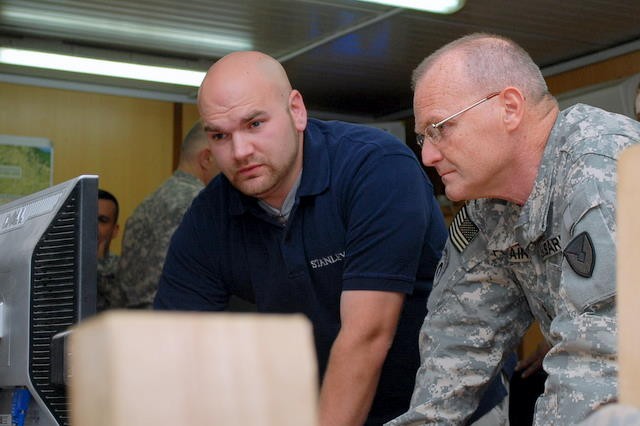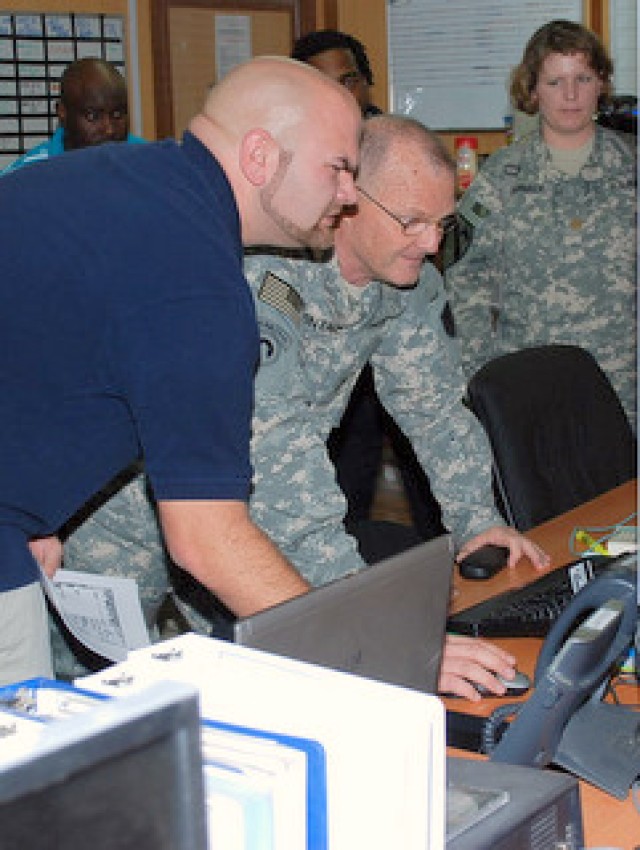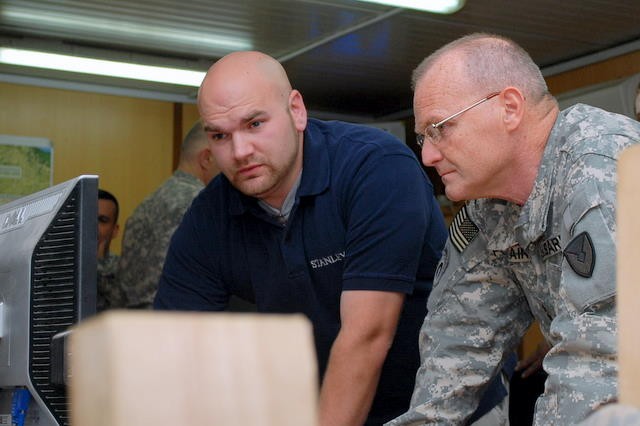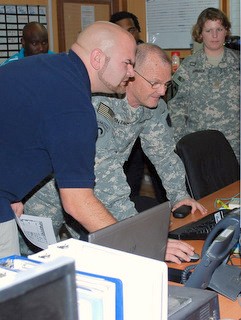JOINT BASE BALAD, Iraq -- Units preparing to redeploy to their home stations at the end of a Operation Iraqi Freedom deployment and the managers charged with the responsible drawdown of forces and equipment have one thing in common: a lot of paperwork before people and equipment can move.
In today's electronic age, the paperwork must also be entered into computerized databases and reconciled to ensure that all equipment is accounted for and is routed to the right destination for redistribution, reset or retrograde.
Fortunately, help is available from the Standard Depot System - Army War Reserve Deployment System (SDS-AWRDS) cell embedded in the 2nd Battalion, 402nd Army Field Support Brigade. SDS and AWRDS are two database systems that are critical in the movement of equipment from Iraq.
"We're the keepers of everything reset," said Adam Coffman, site lead for Stanley Associates.
Coffman's team members are located at fixed Redistribution Property Assistance Team sites throughout Iraq and also accompany mobile teams going out to where equipment is located instead of the unit delivering the equipment to a fixed RPAT site.
Units get both organizational and theater-provided equipment ready for turn-in and then it is all inventoried. When the inventory is correct and any shortages are noted, the Wholesale Responsible Officer signs for the equipment, transferring ownership to the 402nd AFSB.
Contractors then verify the list against what the unit previously reported they were turning in and verify the radio-frequency identification tags attached to each piece of equipment or container. The next step is to input the data into the AWRDS system.
Once in AWRDS, the contractors then input the information into SDS, which is linked to Army Materiel Command's Life Cycle Management Commands, which decides where the equipment will move to. Downstream, this helps the LCMCs repair depots plan workload and allocate resources.




Social Sharing